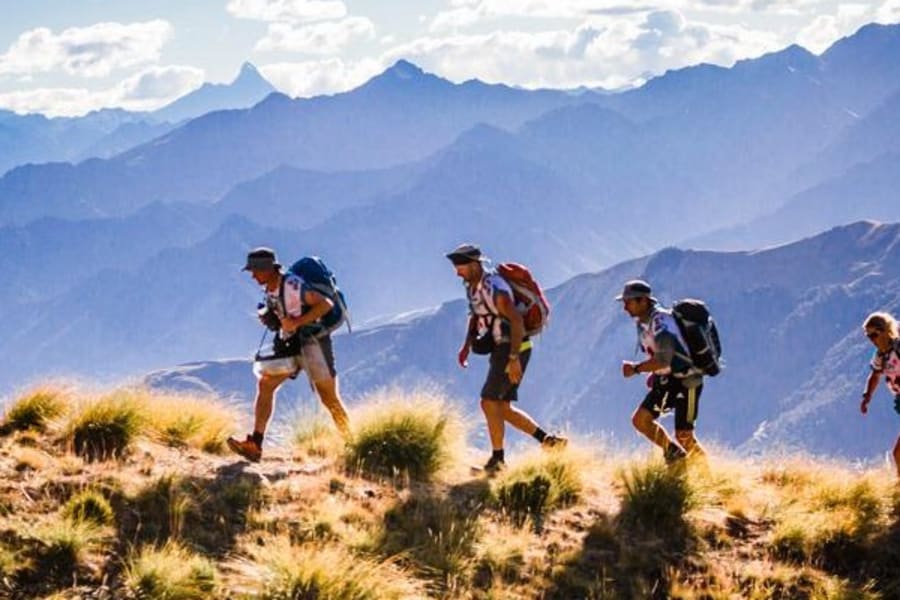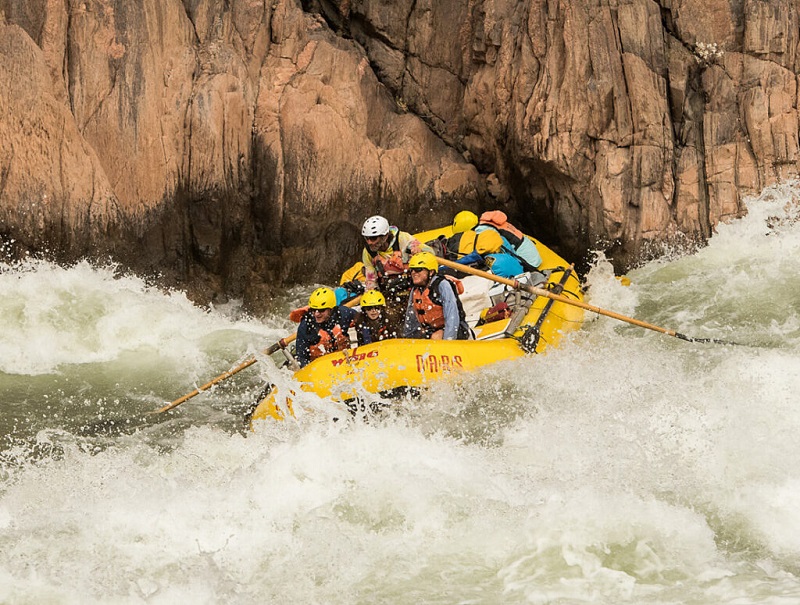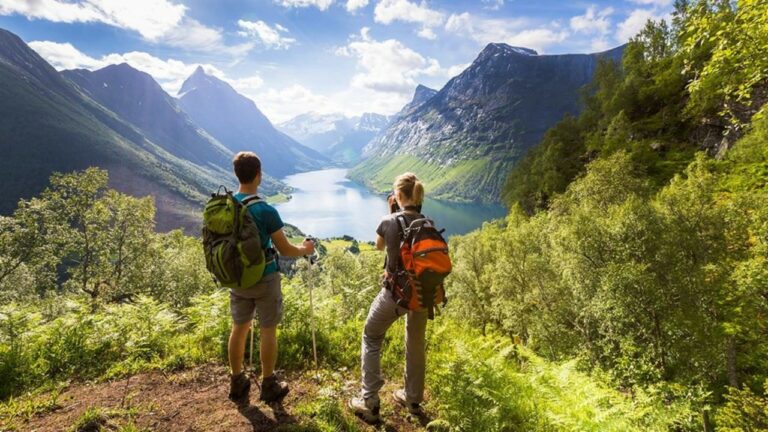In an increasingly connected yet paradoxically homogenized world, the human spirit yearns for authenticity, challenge, and the exhilaration of the unknown. This innate desire fuels the meteoric rise of adventure travel, a dynamic sector of tourism that transcends mere sightseeing. It’s about immersing oneself in new environments, pushing personal boundaries, and forging unforgettable memories through active, often challenging, exploration. From scaling the world’s highest peaks to navigating treacherous whitewater rapids or trekking through remote jungles, adventure travel offers a transformative escape from the mundane. This comprehensive article delves deep into the multifaceted allure of this burgeoning industry, dissecting its core principles, diverse activities, essential preparation, ethical considerations, and profound impact on both travelers and the destinations they explore. We’ll unveil why more and more individuals are trading conventional vacations for the wild, unpredictable embrace of global adventure.
What is Adventure Travel?

More than a simple trip, adventure travel is characterized by its engagement with nature, physical activity, and cultural immersion, often involving an element of perceived or actual risk. It’s about active participation, not passive observation.
Key Characteristics and Types of Adventure Travel:
- Nature Immersion: A fundamental aspect involves experiencing natural environments – mountains, forests, deserts, oceans, rivers. This often means venturing into remote or pristine areas, fostering a deeper connection with the wilderness. It’s about being in nature, not just looking at it.
- Physical Activity: Participants are actively engaged, often requiring varying degrees of physical exertion. This can range from moderate hiking and cycling to highly demanding mountaineering, kayaking, or surfing. The physical challenge is a core component of the adventure.
- Cultural Exchange: Many forms of adventure travel involve direct interaction with local communities, experiencing indigenous cultures, traditions, and ways of life. This can be through homestays, community-based tourism, or participating in local customs, fostering a deeper, more authentic understanding of a destination.
- Element of Risk/Challenge: While safety is paramount, adventure travel inherently carries an element of perceived or actual risk, adding to the thrill and sense of accomplishment. This could be navigating challenging terrain, confronting unpredictable weather, or engaging in high-adrenalin activities. It’s about stepping outside one’s comfort zone.
- Diverse Activities: The spectrum of adventure travel is vast, catering to different fitness levels and interests. It includes:
- Trekking & Hiking: From day hikes to multi-day expeditions in diverse landscapes (e.g., Everest Base Camp, Inca Trail, Patagonia).
- Mountaineering & Climbing: Technical ascents of peaks, rock climbing, ice climbing, and bouldering.
- Water Sports: Whitewater rafting, kayaking, canoeing, surfing, scuba diving, snorkeling, paddleboarding, and sailing.
- Cycling & Mountain Biking: Road cycling tours, challenging mountain bike trails, and multi-day cycling expeditions.
- Wildlife Safaris & Eco-Tourism: Ethical wildlife viewing, often involving walking safaris, birdwatching, or conservation efforts in natural habitats.
- Winter Sports: Ski touring, snowboarding off-piste, ice climbing, and snowshoeing.
- Extreme Sports: Bungee jumping, skydiving, paragliding, canyoneering, and zip-lining, which offer high-octane thrills.
- Cultural Immersion Trips: While less physically demanding, these often involve active participation in local life, learning traditional crafts, or engaging in community projects.
- Sustainable and Responsible Practices: Increasingly, adventure travel emphasizes sustainability, minimizing environmental impact, supporting local economies, and respecting cultural sensitivities. It moves away from mass tourism towards more thoughtful engagement.
Essential Preparation for Adventurers
Embarking on an adventure travel journey requires meticulous planning that goes beyond booking flights and accommodation. Proper preparation ensures safety, maximizes enjoyment, and mitigates unforeseen challenges.
Crucial Steps in Adventure Travel Preparation:
- Assess Your Fitness Level and Train Appropriately: Be brutally honest about your physical condition. Research the specific demands of your chosen adventure (e.g., altitude, duration, technical skills) and embark on a targeted training regimen well in advance. This might include strength training, cardiovascular endurance, and sport-specific drills. Under-preparation is a significant risk factor for injury and reduced enjoyment.
- Research Your Destination Thoroughly: Beyond popular attractions, research the local climate, terrain, political stability, cultural norms, required permits, and potential hazards (e.g., venomous wildlife, extreme weather patterns). Understanding the local context is vital for safety and cultural respect.
- Choose a Reputable Tour Operator (If Applicable): For complex or high-risk adventures, selecting a certified and experienced tour operator with a proven safety record, qualified guides, and proper insurance is paramount. Read reviews, check credentials, and ensure they adhere to ethical and sustainable practices.
- Secure Appropriate Travel Insurance: Standard travel insurance may not cover adventure activities. Purchase specialized adventure travel insurance that specifically covers the risks of your chosen activities (e.g., helicopter evacuation for mountaineering, diving incidents), medical emergencies, trip cancellations, and lost gear.
- Invest in Proper Gear and Equipment: Quality, sport-specific gear is essential for safety, comfort, and performance. This includes appropriate clothing layers, footwear, technical equipment (e.g., climbing gear, wetsuits), navigation tools, and safety equipment. Do not compromise on critical gear. Practice using new equipment before your trip.
- Understand Health and Safety Protocols: Research required vaccinations, prophylactic medications (e.g., for malaria), and common illnesses in your destination. Pack a comprehensive first-aid kit. Learn basic wilderness first aid if venturing into remote areas. Know emergency contact numbers and procedures.
- Develop Key Skills (if necessary): If your adventure involves technical skills (e.g., rope work, navigation, whitewater paddling), enroll in courses and practice extensively before your trip. Proficiency enhances safety and enjoyment.
- Physical and Mental Acclimatization: For high-altitude treks, build in adequate time for acclimatization. Mentally prepare for challenges, discomfort, and solitude if traveling alone or to remote areas. Develop coping mechanisms for stress.
Responsible Adventure Tourism

As adventure travel grows, so too does the responsibility to ensure it benefits local communities and preserves the natural environments it relies upon. Ethical considerations are paramount.
Ethical and Sustainable Practices in Adventure Travel:
- Support Local Economies: Choose locally owned and operated tour companies, accommodations, restaurants, and shops. Purchase local crafts and services, ensuring your travel dollars directly benefit the host community. This fosters economic empowerment and reduces leakage to external corporations.
- Respect Local Culture and Traditions: Learn basic phrases of the local language. Dress modestly where appropriate. Ask permission before taking photos of people. Be mindful of local customs, religious sites, and social etiquette. Avoid behaviors that could be seen as disrespectful or intrusive.
- Minimize Environmental Impact (Leave No Trace): Adhere strictly to Leave No Trace principles. Pack out all trash, stay on marked trails, avoid disturbing wildlife, and use eco-friendly products. Choose tour operators with strong environmental policies. Support conservation efforts in the areas you visit.
- Fair Wages and Working Conditions: If hiring local guides, porters, or support staff, ensure they are paid fair wages, work under safe conditions, and are not exploited. Inquire about the operator’s policies on porter welfare, for example.
- Responsible Wildlife Viewing: Maintain respectful distances from wildlife. Never feed wild animals. Avoid tours that involve animal exploitation (e.g., riding elephants, unethical animal shows). Choose operators that prioritize animal welfare and conservation.
- Avoid Commodification of Culture: Be wary of tours that seem to exploit or misrepresent local cultures for tourist entertainment. Seek authentic experiences that genuinely benefit and empower the communities involved.
- Reduce Waste and Conserve Resources: Minimize plastic waste by carrying reusable water bottles and bags. Conserve water and energy, especially in remote areas where resources might be scarce. Choose accommodations with good sustainability practices.
- Educate Yourself and Others: Learn about the social and environmental issues facing your destination. Share your knowledge with fellow travelers and encourage responsible practices within the travel community.
Personal Growth and Life-Altering Experiences
Beyond the physical challenges, adventure travel is often a catalyst for profound personal growth, leading to increased self-awareness, resilience, and a renewed perspective on life.
Personal Benefits and Transformative Aspects of Adventure Travel:
- Enhanced Resilience and Mental Toughness: Overcoming physical and mental challenges in unfamiliar environments builds incredible resilience. Pushing through discomfort, adapting to the unexpected, and persevering cultivates mental toughness applicable to all areas of life.
- Increased Self-Reliance and Confidence: Navigating new terrains, solving problems on the go, and relying on one’s own abilities fosters a deep sense of self-reliance and boosts self-confidence, knowing you can handle difficult situations.
- Stress Reduction and Mindfulness: Immersing oneself in nature, away from the constant demands of daily life, can significantly reduce stress. The focus required for many adventure activities promotes a meditative state and increased mindfulness.
- New Perspectives and Appreciation: Experiencing diverse cultures, simpler ways of life, and the vastness of natural landscapes can profoundly shift one’s perspective, fostering a greater appreciation for one’s own life and the interconnectedness of the world.
- Improved Physical Health and Fitness: The inherent physical activity involved directly contributes to improved cardiovascular health, strength, endurance, and overall physical well-being.
- Breaking Out of Comfort Zones: Adventure travel actively encourages stepping outside one’s comfort zone, which is crucial for personal growth. Facing fears and embracing the unknown leads to new discoveries about oneself.
- Strengthening Relationships: Sharing challenging and rewarding adventure experiences with travel companions can forge incredibly strong bonds and deepen existing relationships.
- Digital Detox and Reconnection with Self: Many adventure travel destinations offer limited connectivity, providing a much-needed opportunity for a digital detox, allowing individuals to reconnect with themselves and their immediate surroundings.
Contribution to Local and Global Economies
Despite its niche appeal, adventure travel represents a significant and growing economic force, particularly benefiting local communities in remote or developing regions.
Economic Impacts and Contributions of Adventure Travel:
- Direct Revenue for Local Communities: Unlike mass tourism, adventure travel often channels money directly into local economies through fees for guides, porters, homestays, local transport, food purchases, and handicraft sales.
- Job Creation (Sustainable): It creates jobs for local populations as guides, porters, lodge owners, cooks, and support staff, often in areas where other employment opportunities are scarce. This fosters sustainable livelihoods.
- Preservation Incentives: The economic value generated by adventure tourism can provide a powerful incentive for local communities and governments to protect natural environments and cultural heritage, recognizing their value as tourist attractions.
- Infrastructure Development (Sustainable): While large-scale infrastructure for adventure tourism is less common than for mass tourism, it can lead to the development of smaller, more sustainable infrastructure like trails, guesthouses, and clean water systems that benefit both tourists and locals.
- Diversification of Local Economies: Adventure travel can help diversify economies that might otherwise be reliant on single industries, providing resilience and alternative income sources.
- Attracting Investment: The growing profitability of adventure tourism can attract external investment into remote areas, leading to further development of services and facilities, provided it is done responsibly.
- Increased International Recognition: As a destination becomes known for its adventure offerings, it gains international recognition, potentially attracting broader tourism and associated economic benefits.
- Support for Conservation Efforts: Many adventure tour operators and travelers directly contribute to conservation projects or local charities, providing vital funding for environmental protection and community development.
Essential Equipment and Technology for the Modern Adventurer
The evolution of materials science and digital technology has revolutionized adventure travel gear, making expeditions safer, more comfortable, and more accessible.
Key Gear and Tech Advancements for Adventure Travel:
- Lightweight and Durable Materials: Advances in fabrics (e.g., Gore-Tex, synthetic insulations) and alloys (e.g., aerospace-grade aluminum) have led to lighter, more durable, and more weather-resistant clothing, tents, backpacks, and climbing equipment.
- GPS Devices and Satellite Communication: GPS handhelds and smartphone apps provide precise navigation even in remote areas. Satellite communicators (e.g., Garmin inReach, Zoleo) allow for emergency messaging and two-way communication outside cell service, dramatically enhancing safety.
- Action Cameras (GoPro, DJI Osmo Action): These rugged, compact cameras allow adventurers to capture high-quality video and photos of their experiences from unique perspectives, enabling sharing and documenting their journeys.
- Portable Water Filters and Purifiers: Lightweight, highly effective water filters (e.g., Sawyer, Katadyn) and purifiers allow adventurers to safely drink from natural water sources, reducing the need to carry heavy water supplies and minimizing plastic waste.
- Advanced Headlamps and Lighting: Modern headlamps offer powerful, long-lasting illumination with multiple modes, essential for navigating in the dark or for basecamp activities, often with rechargeable batteries.
- Smartwatches and Fitness Trackers: These devices monitor vital signs, track activity, provide navigation, and can even offer emergency features, integrating health and safety data into the adventure experience.
- Backpacking Stoves and Water Boilers: Compact, efficient stoves and quick-boil systems (e.g., Jetboil) make cooking and boiling water safe and convenient in the wilderness, allowing for proper nutrition and hydration.
The Human Connection
While the call of the wild might seem solitary, adventure travel is often deeply enriched by human connection, particularly through the invaluable role of local guides and shared experiences.
The Human Element in Adventure Travel:
- Expert Local Guides: Knowledgeable local guides are often indispensable. They provide crucial safety expertise, navigate challenging terrain, offer deep insights into local culture and ecology, and enhance the overall experience through their storytelling and passion. They are often the bridge between travelers and the destination’s heart.
- Shared Group Experiences: Traveling with a group of like-minded adventurers fosters camaraderie and shared challenges. The bonds formed over a strenuous climb, a thrilling whitewater descent, or a remote campsite often become lifelong friendships.
- Homestays and Community Interaction: Opting for homestays or participating in community-based tourism initiatives provides authentic, immersive cultural experiences. Living with local families offers a unique perspective on their daily lives, traditions, and values, fostering mutual respect.
- Learning from Indigenous Knowledge: In many remote areas, indigenous communities possess invaluable traditional knowledge about the land, wildlife, and sustainable living. Engaging with and learning from them can enrich the adventure and promote cultural preservation.
- Building Cross-Cultural Understanding: Direct interaction with locals and fellow travelers from different backgrounds helps break down stereotypes, fosters empathy, and promotes a deeper understanding of global diversity.
- The Role of Porters and Support Staff: In many expeditions (e.g., high-altitude trekking), local porters and support staff are vital. Recognizing their hard work, ensuring their fair treatment, and engaging with them respectfully is an important part of the adventure travel experience.
- Creating Lasting Memories Together: The shared challenges, breathtaking views, and moments of triumph create indelible memories that are often more profound when experienced and reminisced about with others.
Evolving Trends and Sustainable Horizons
Adventure travel is a dynamic sector, constantly adapting to new technologies, changing traveler preferences, and an increasing imperative for sustainability.
Future Trends and Evolution in Adventure Travel:
- Hyper-Personalization: AI and data analytics will enable increasingly personalized adventure itineraries, tailored to individual fitness levels, interests, risk appetite, and desired cultural immersion.
- “Microadventures” and Urban Adventures: A growing trend towards shorter, more accessible adventures close to home or within urban environments, catering to those with limited time or budget but still seeking a thrill.
- Technological Integration (AR/VR): Augmented Reality could offer interactive maps or wildlife identification in real-time, while Virtual Reality could allow potential travelers to “experience” an adventure before booking, enhancing planning and excitement.
- Increased Focus on Well-being and Transformative Journeys: Beyond just physical challenge, adventures will increasingly market holistic well-being, mindfulness, and personal transformation as key outcomes. Think “wellness adventures.”
- Sustainable and Regenerative Tourism: A stronger emphasis on not just minimizing harm but actively contributing to the ecological and social regeneration of destinations, with certifications for truly sustainable operators.
- Accessibility for Diverse Abilities: More adaptive equipment and inclusive tour operators will make adventure travel accessible to individuals with a wider range of physical abilities, broadening participation.
- Remote Work Integration (“Work From Wild”): The rise of remote work could see more individuals combining adventure travel with their professional lives, extending stays in adventurous locations.
- Citizen Science and Conservation Tourism: Travelers actively participating in scientific research or conservation efforts (e.g., wildlife monitoring, reforestation) as part of their adventure, contributing directly to positive impact.
Conclusion
Adventure travel is more than a vacation; it’s a philosophy, a commitment to growth, and a profound way to engage with the world and oneself. By embracing the principles of careful preparation, ethical engagement, and an open mind, travelers can unlock unparalleled experiences that not only thrill the senses but also enrich the soul, leaving an indelible mark on their personal history and contributing positively to the vast, wild tapestry of our planet. The journey into the unknown awaits.



